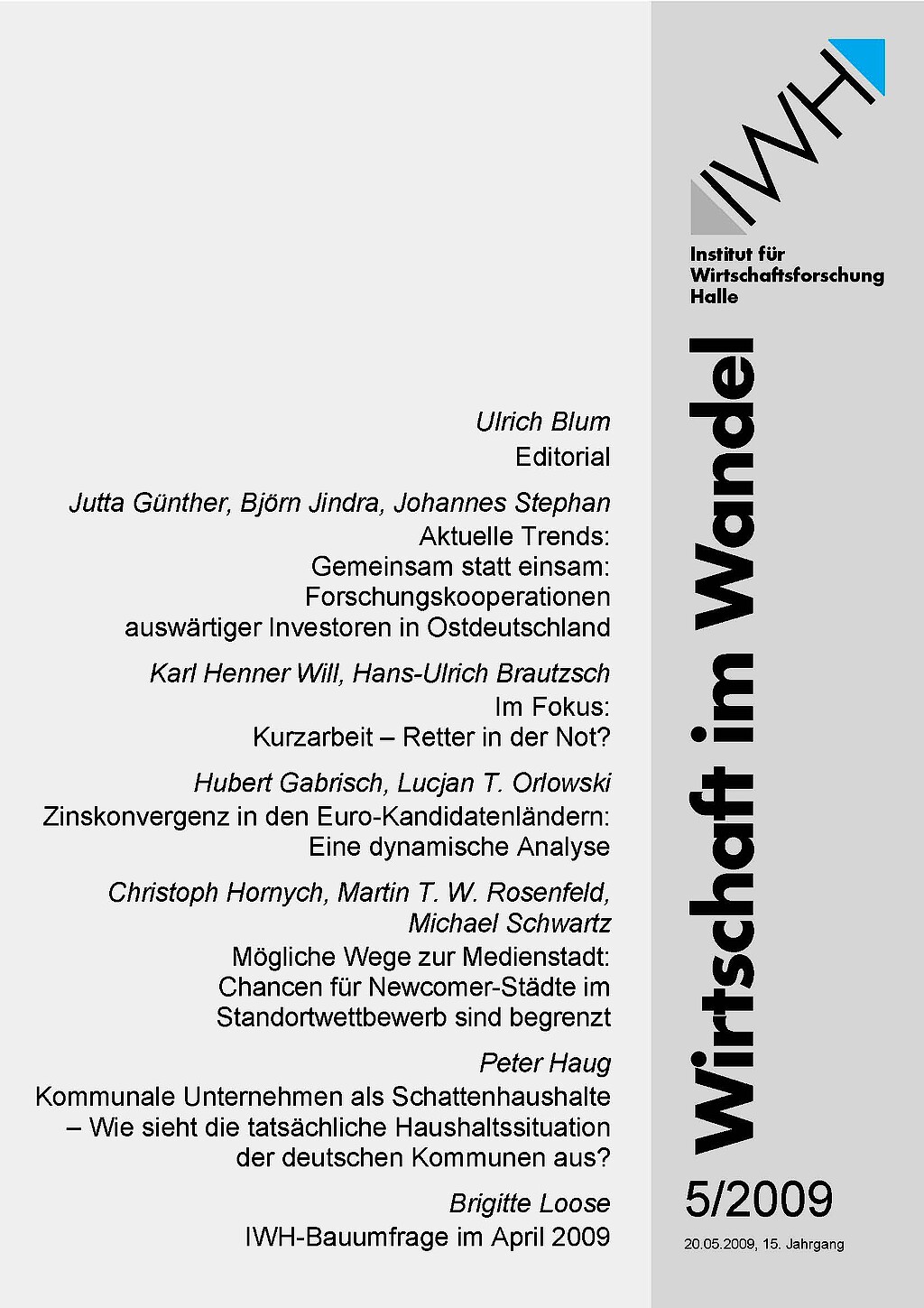Possible Ways for Developing a Media City: Chances for Newcomer Cities are rather Limited!
Christoph Hornych
Martin T. W. Rosenfeld
Michael Schwartz
in: Wirtschaft im Wandel,
No. 5,
2009
Abstract
Zahlreiche Städte sind bestrebt, sich als Zentren der Kreativ- und Medienwirtschaft zu etablieren. Hinter derartigen Strategien zur Entwicklung der lokalen Medienwirtschaft steht das Ziel, vom hohen Anteil des überregionalen Absatzes der Medienwirtschaft, von möglichen Imageeffekten sowie Rückflüssen von Gebühren des öffentlich-rechtlichen Rundfunks zu profitieren. Vor diesem Hintergrund untersucht der vorliegende Beitrag die Leistungsfähigkeit möglicher Instrumente der Kommunen, um die lokalen Standortbedingungen im Bereich der Medienwirtschaft zu verbessern. Eine Analyse der Standortpräferenzen der Branchen zeigt, dass in der Medienwirtschaft sowohl Lokalisations- als auch Urbanisierungseffekten eine hohe Bedeutung zukommt. Wesentliche wirtschaftspolitische Maßnahmen, die auf die Generierung bzw. Verstärkung dieser Effekte abzielen, können die Ansiedlung öffentlich-rechtlicher Rundfunkanstalten, die Vergabe von Subventionen durch die Film- und Medienförderung der Länder, die Einrichtung von medienrelevanten Wissenschafts- und Bildungseinrichtungen, die Errichtung von auf die Medienbranche spezialisierten Technologie- und Gründerzentren sowie die Netzwerk- und Quartiersentwicklung sein. Der Beitrag macht deutlich, dass die meisten dieser Instrumente hinsichtlich ihrer möglichen Effekte nur begrenzt wirksam sein können. Für Städte ohne eine öffentlich-rechtliche Sendeanstalt und ohne medienrelevante Bildungseinrichtungen sind die Chancen, sich neu als Medienstadt zu positionieren, eher als gering einzuschätzen.
read publication





